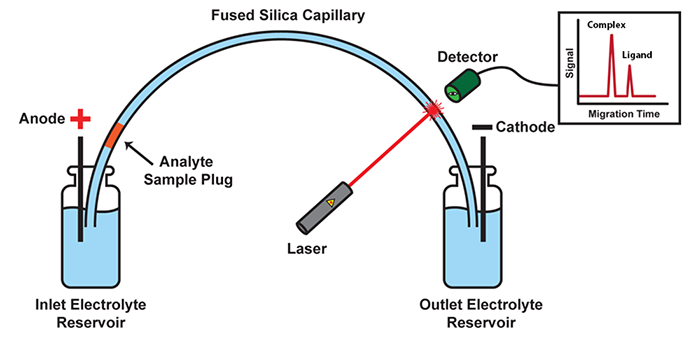Introduction to CE
Introduction to CE
Capillary electrophoresis (CE) is an instrumental approach to gel-electrophoresis, whose greatest advantage is its diverse range of applications. CE technology is commonly used by the biotech labs as a reliable, high resolution, and a highly sensitive tool. It is applied for protein, carbohydrate & DNA-related analysis such as oligonucleotides analysis, DNA sequencing, and dsDNA fragments analysis.

The instrumentation needed to perform capillary electrophoresis is relatively simple. A basic schematic of a capillary electrophoresis system is shown in the figure. The system's main components are a sample vial, source and destination vials, a capillary, electrodes, a high-voltage power supply, a detector, and data output and handling device.
The source vial, destination vial, and capillary are filled with an electrolyte such as an aqueous buffer solution. To introduce the sample, the capillary inlet is placed into a vial containing the sample and then returned to the source vial (sample is introduced into the capillary via capillary action, pressure, or siphoning). The migration of the analytes is then initiated by an electric field that is applied between the source and destination vials and is supplied to the electrodes by the high-voltage power supply.
It is important to note that all ions, positive or negative, are pulled through the capillary in the same direction by electroosmotic flow. The analytes separate as they migrate due to their electrophoretic mobility, and are detected near the outlet end of the capillary. The output of the detector is sent to a data output and handling devices such as an integrator or computer. The data is then displayed as an electropherogram, which reports detector response as a function of time. Separated chemical compounds appear as peaks with different migration times in an electropherogram.
Reference: https://medium.com/@gnabr/sanger-and-maxam-gilbert-sequencing-824272279b5f
